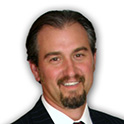Plan Health: The Renewed Frontier
In less than eight year’s time, since the passing of the Pension Protection Act in 2006, more has changed in the retirement industry than in the prior three decades. Closely following those changes came the rollout of the enhanced plan-level and participant-level fee disclosure requirements, significantly molding the way retirement plans are priced, presented, and sold. These rules have created significant changes for our industry.
Specifically, these rules have impacted the retirement plans themselves, as well as plan sponsors and, most importantly, participants. To list the most obvious, these changes have:
- Made plan sponsors aware of their fiduciary liabilities and deficiencies, and their need for professional advisers, now more than ever.
- Caused recordkeepers to take notice, that with full fee disclosure, their fees must be competitive or they risk losing business.
- Given plan sponsors more information, and better tools to drive costs down, while improving core fund options.
- Created a template through 408(b)2 for service providers to clearly define their differences, their value propositions, and their fiduciary status, helping eliminate the innuendo and vagueness that plagued our industry for too long.
- Greatly reduced the insistence of recordkeepers to drive money to funds that they manufacture, helping eliminate bias.
- Forced advisers, and all service providers, to renew their focus on things such as: more creative solutions, measurable results, and most importantly, participant outcomes.
Simply put, as all services, all fees, and most of the potential bias issues are now required to be disclosed in a comprehensive manner, it has shaped a landscape where those items have become less impactful. As a direct result of easily identifying pricing, services and investment offerings, the service providers have realized they tend to look the same to plan sponsors, forcing a genesis of new ideas, and creating a new reality where, once and for all, results matter.
It is this renewed focus on results, and the input of so many exceptional advocates like Shlomo Benartzi’s “Save More Tomorrow" and Stig Nybo’s “Transform Tomorrow: Awakening the Super Saver In Pursuit of Retirement Readiness,” that has brought plan health and retirement readiness to the forefront, where they should be.
While the term “plan health” is catching on like wildfire, everyone’s definition is different. Like with any significant change that sweeps any industry, there are normally only two ways that a new idea gains significant attention, and in turn, forces change on industry participants. In our case, that is plan sponsors and service providers.
The first reason is the most obvious: legislative change. Legislative change is typically never welcome as it affects the largest institutional providers that have built their business model around the old rules, and that have the most to lose.
The second reason change tends to sweep through an industry is a severe need or desire by the end user to see that change. Industry service providers/manufacturers must either take notice, or pay the price of irreparable negligence as change passes them by.
Make no mistake, while the legislative changes have enabled plan sponsors to assess their retirement plans more clearly, it is actually the sheer will of plan sponsors that is driving the industry towards plan health.
To define the concept of plan health, we must first understand why it is gaining such momentum. That momentum stems from the need, or perceived need, of plan sponsors. In this case, the “need” is simple to see:
We now face and estimated retirement savings gap of $6.8 to $14 trillion, with lower and middle-income Americans at the most risk. (National Institute on Retirement Security, “The Retirement Savings Crisis: Is It Worse Than We Think?” June 2013)
Among working households age 25 to 64, a shocking 92% do not have retirement account balances that meet minimum savings benchmarks recommended by the financial services industry. (National Institute on Retirement Security, “The Retirement Savings Crisis: Is it Worse Than We Think?” June 2013)
Currently, only 4% of participants are saving north of 10%, with more than 76% of them saving 7% or less, leaving a vast majority woefully shy of ever reaching retirement successfully (American Benefits Institute, Trends in 401(k) Plans and Retirement Rewards, March 2013)
Less than 11% of employees under 70 save enough to reach the full company match. (American Benefits Institute, Trends in 401(k) Plans and Retirement Rewards, March 2013)
Four out of five working households have retirement savings less than one times their annual income. (National Institute on Retirement Security, “The Retirement Savings Crisis: Is It Worse Than We Think?” June 2013)
Our findings confirm that the American dream of retiring comfortably after a lifetime of work will be impossible for many. (National Institute of Retirement Security, June 2013)
It is these statistics alone that define what plan health is, and it will be the focus of this column moving forward. It is my belief that there is no time in the history of retirement plans that plan advisers are more needed than right now. Understand that driving plan health is built around the most basic concept: to help as many Americans find financial freedom as we can.
Over the next several columns, I will share why this trend will shape many aspects of the retirement industry, how it will shape it, why the recordkeepers have the most to lose, and why the participants and advisers have the most to gain. But I preface it with this: the changes ahead are the most exciting and refreshing to affect our industry in a long time, and for those of you willing to rethink your true value, embrace significant change, and refocus your model around participant outcomes, the rewards will be far greater than anything you have ever done before.
Scott Colangelo is the founder and managing director of Qualified Plan Advisors, which provides retirement services to over 300 retirement plans, and he is also the founder of Plan Health Solutions (www.planhealth.com).

